Abstract
An artefact may appear in the clinical electroretinogram (ERG) that can interfere with the recording and interpretation of the ERG b wave. This artefact, the photomyoclonic reflex (PMR), was studied by covering the eye containing the recording electrode and stimulating the fellow eye. Records obtained by this technique before and after administration of a modified Van Lint lid block demonstrated that most of the PMR is due to a reflex contraction of the orbicularis muscle. The remaining part of the PMR was ascertained by eye movement recordings to be a 1.5 degrees to 3.5 degrees downward and medial eye movement. In most persons the PMR occurs with a latency that is fast enough (59 ms +2- 7 ms) to interfere with interpretation of the b wave under most conditions. The PMR can be minimised in some cases by habituation or conditioned suppression. However, these methods generally do not extinguish the PMR but reduce it enough so that it would not readily be rejected as artefact. In such cases the PMR may produce a wave form that mimics a normal amplitude ERG but with delayed implicit time.
Full text
PDF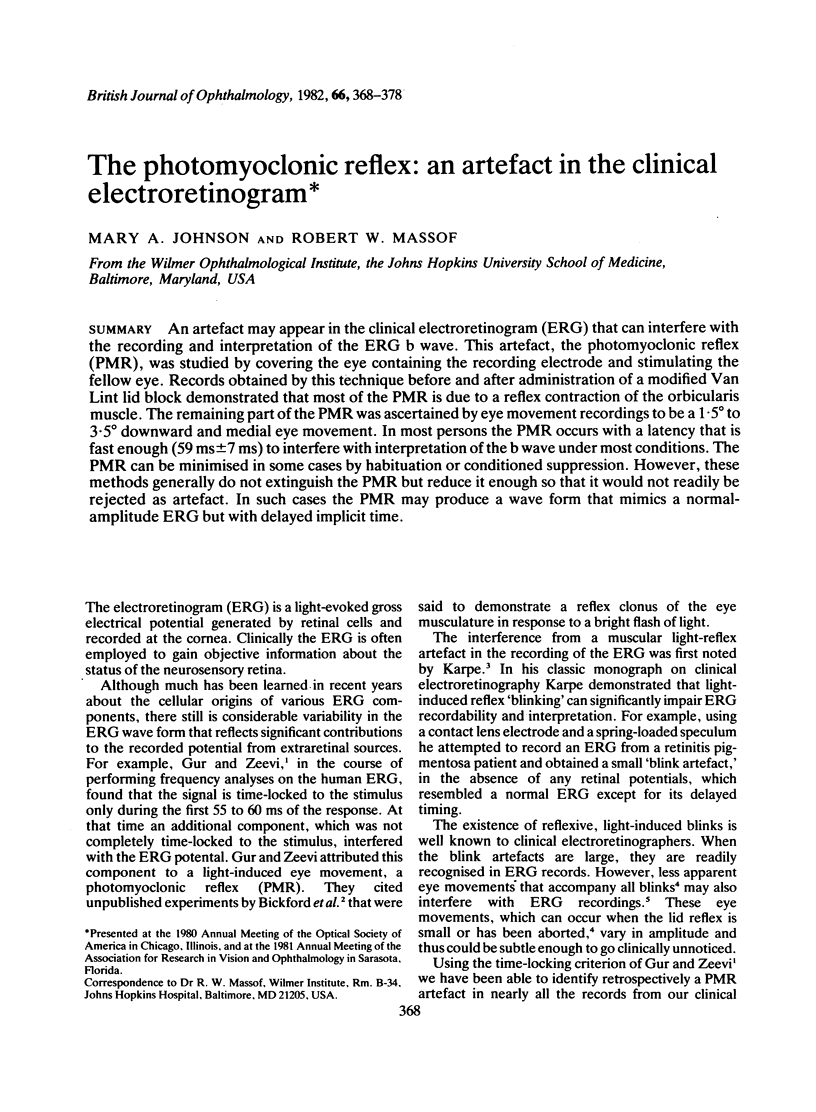
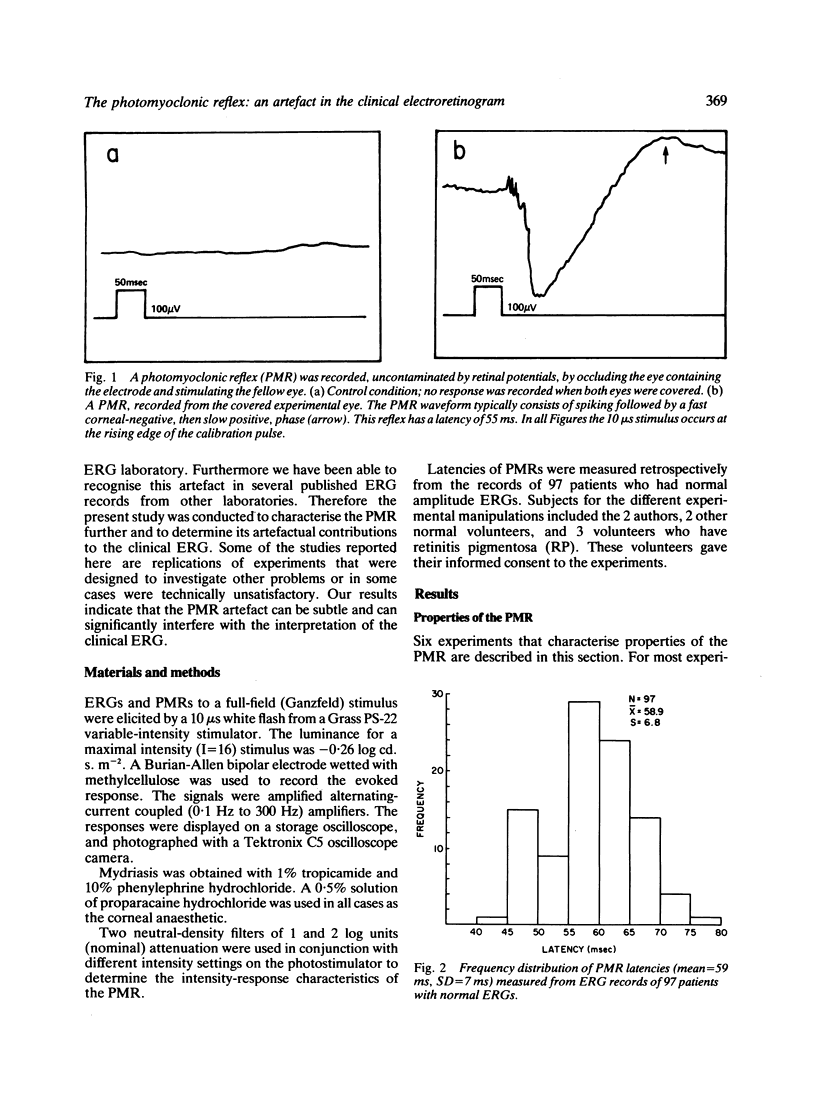
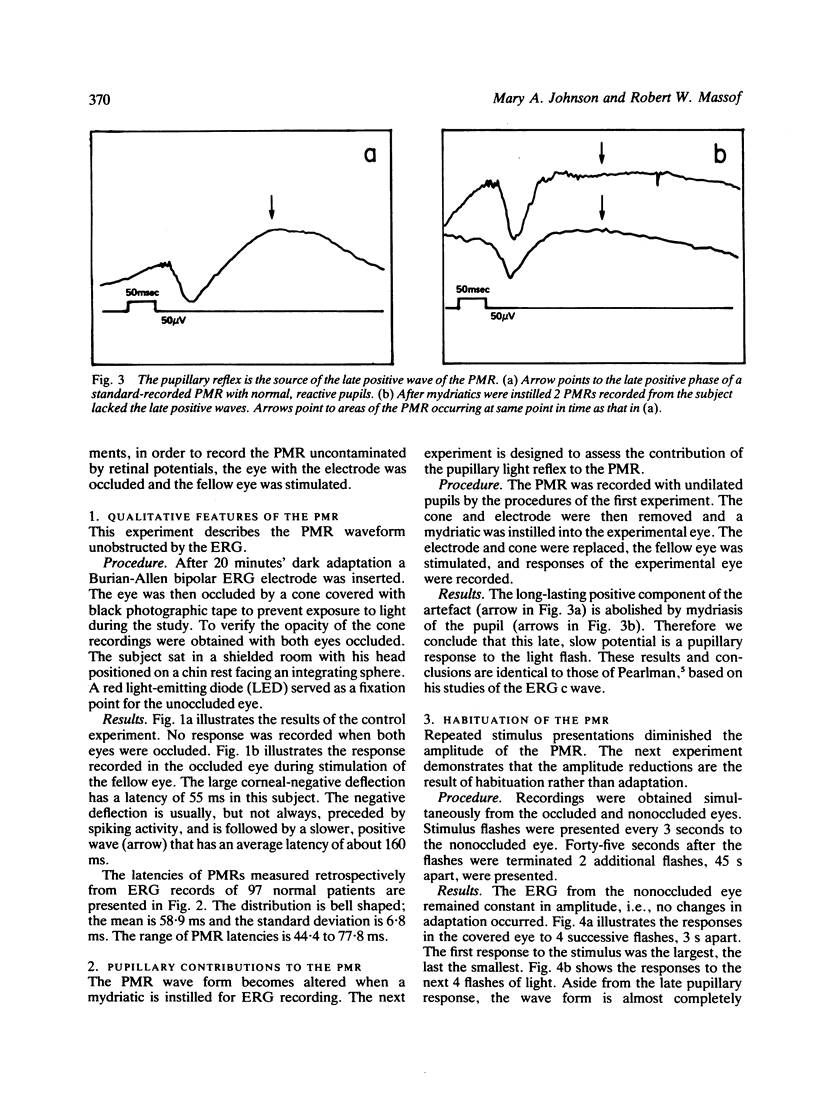
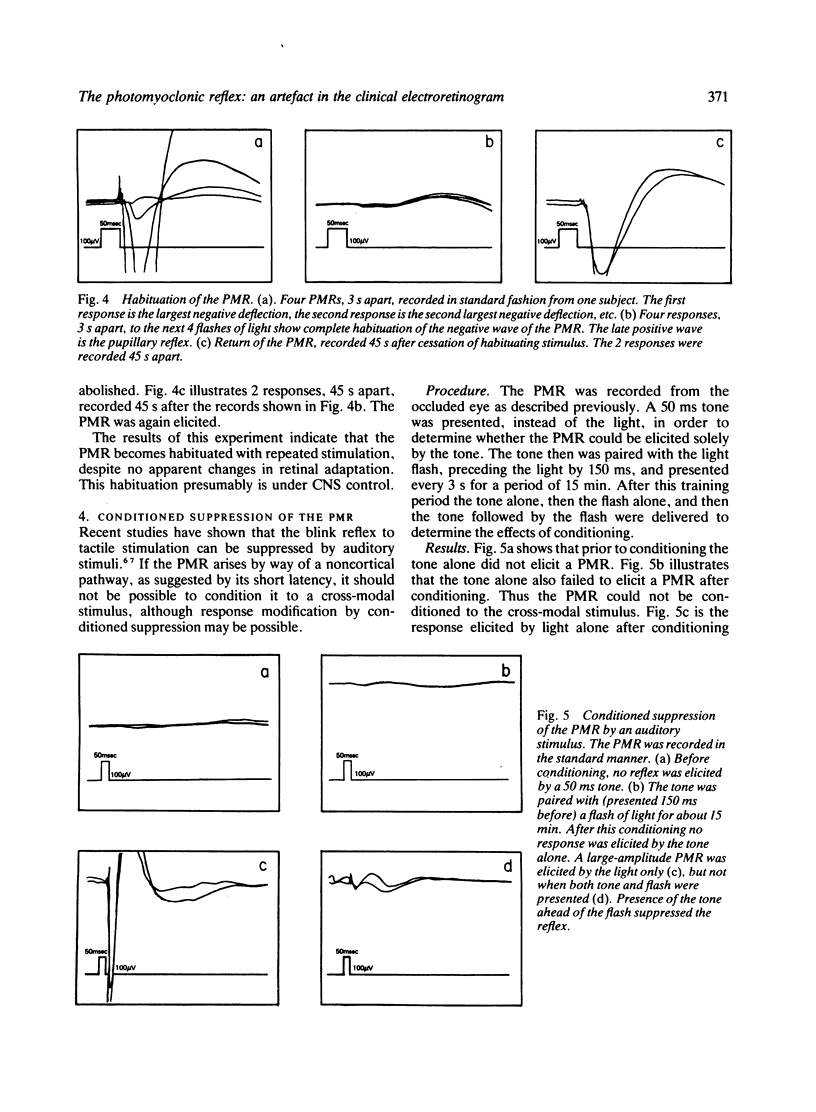
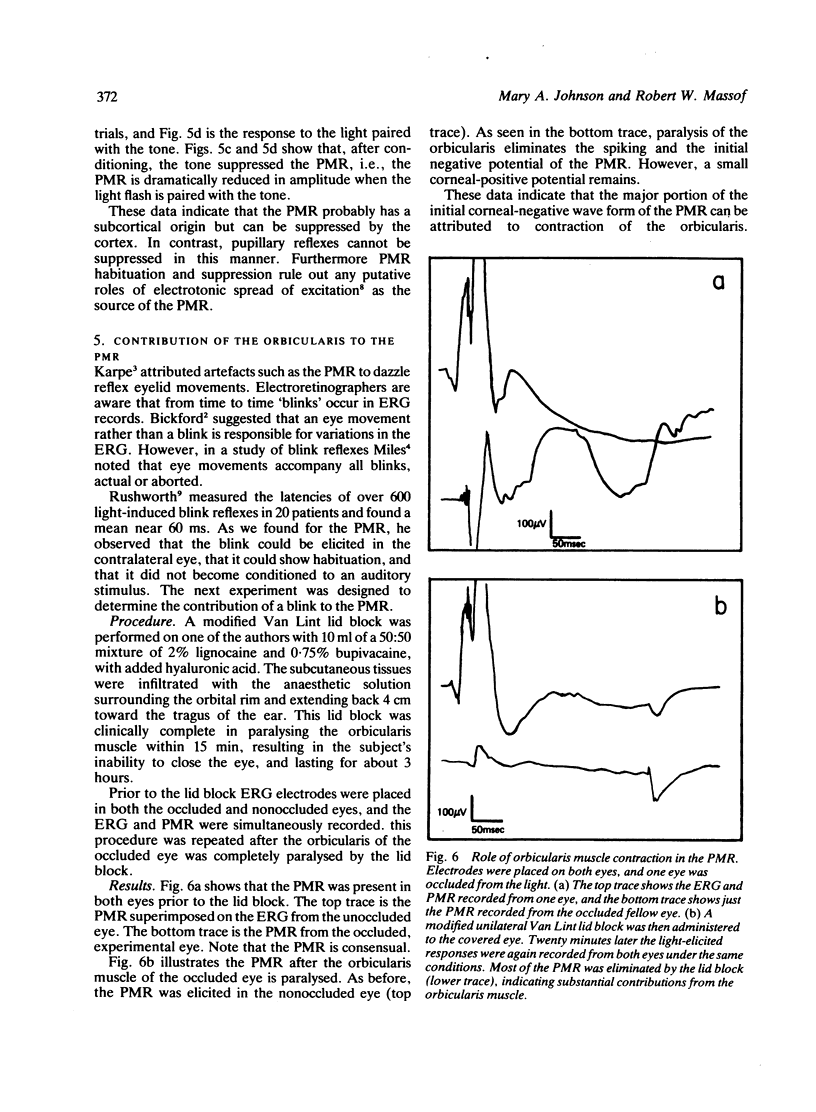
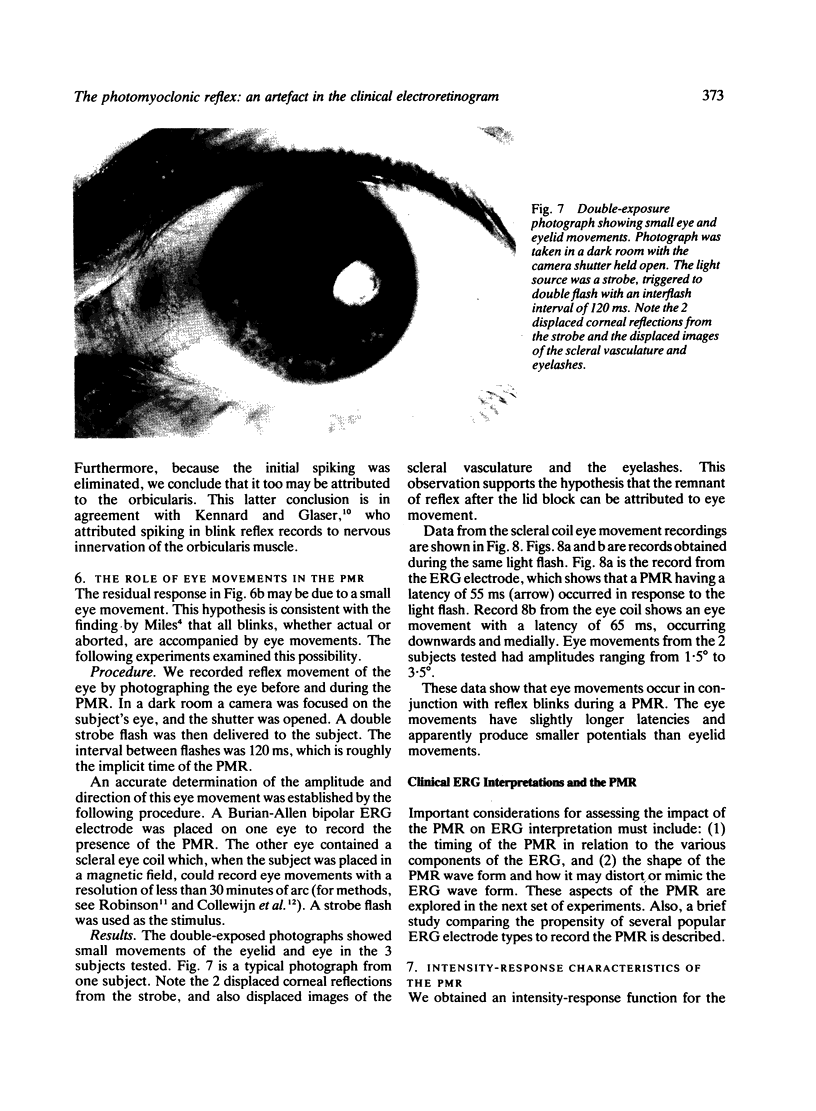
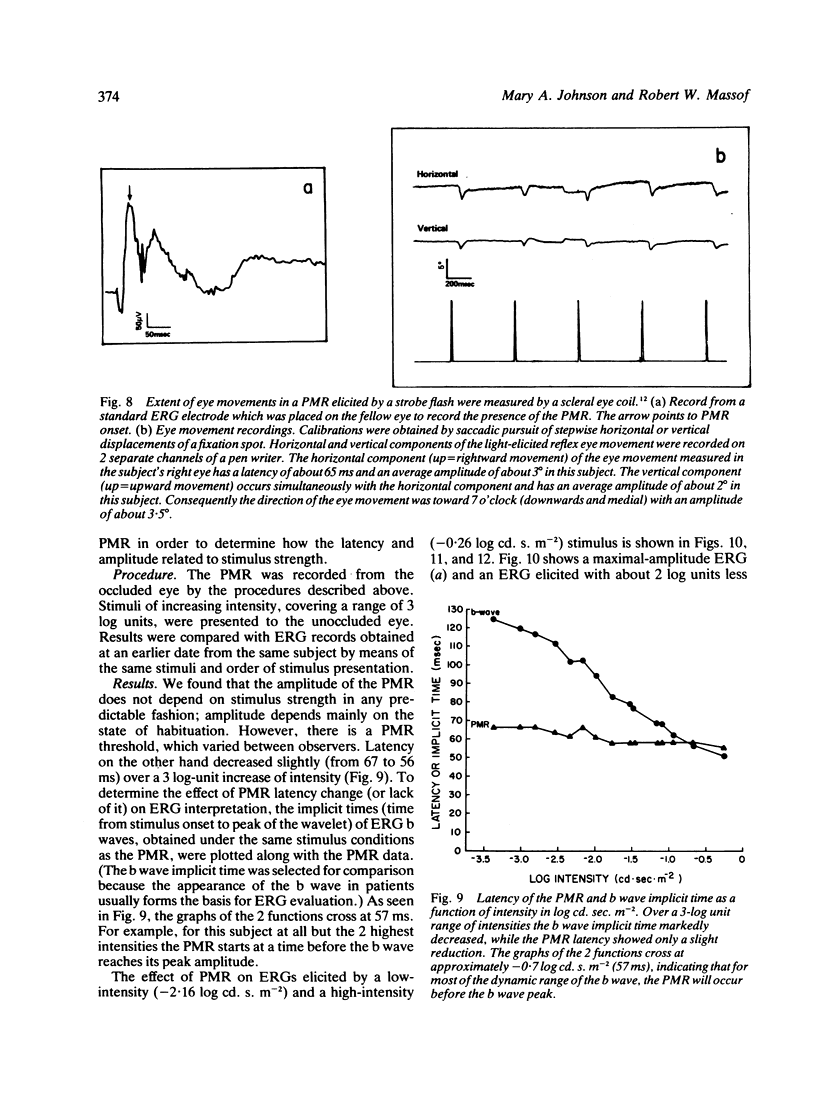
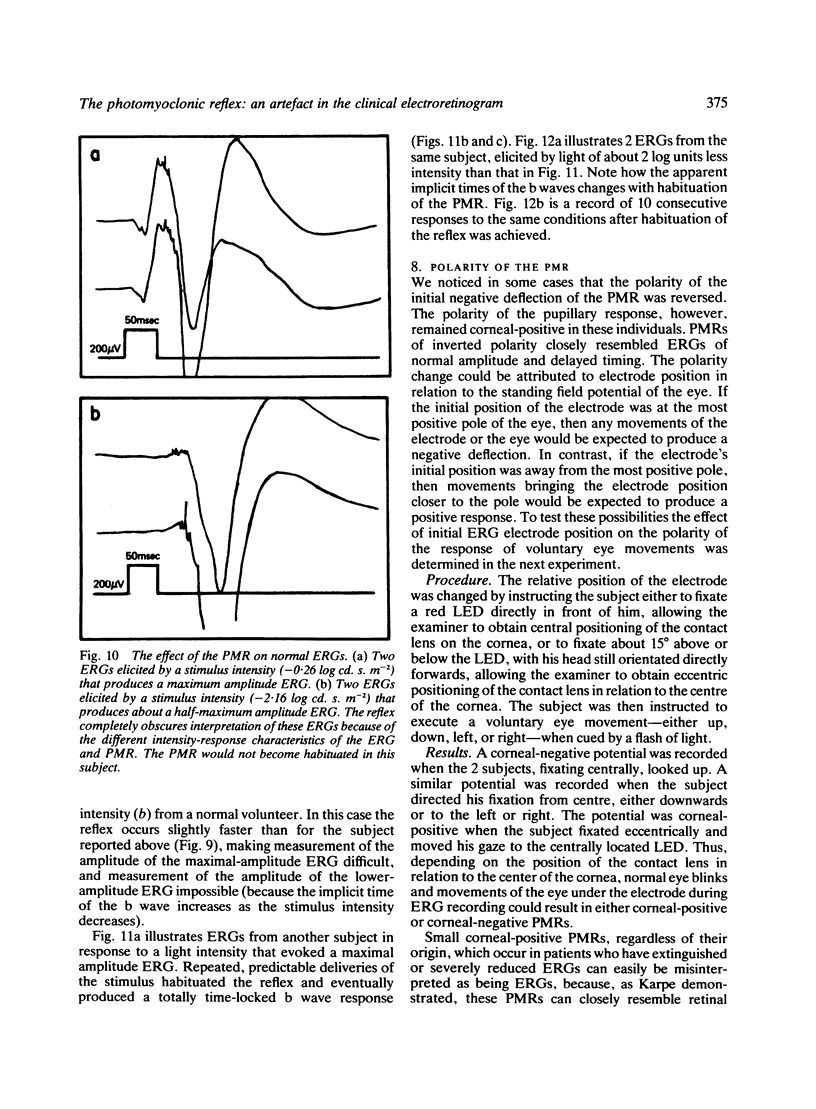
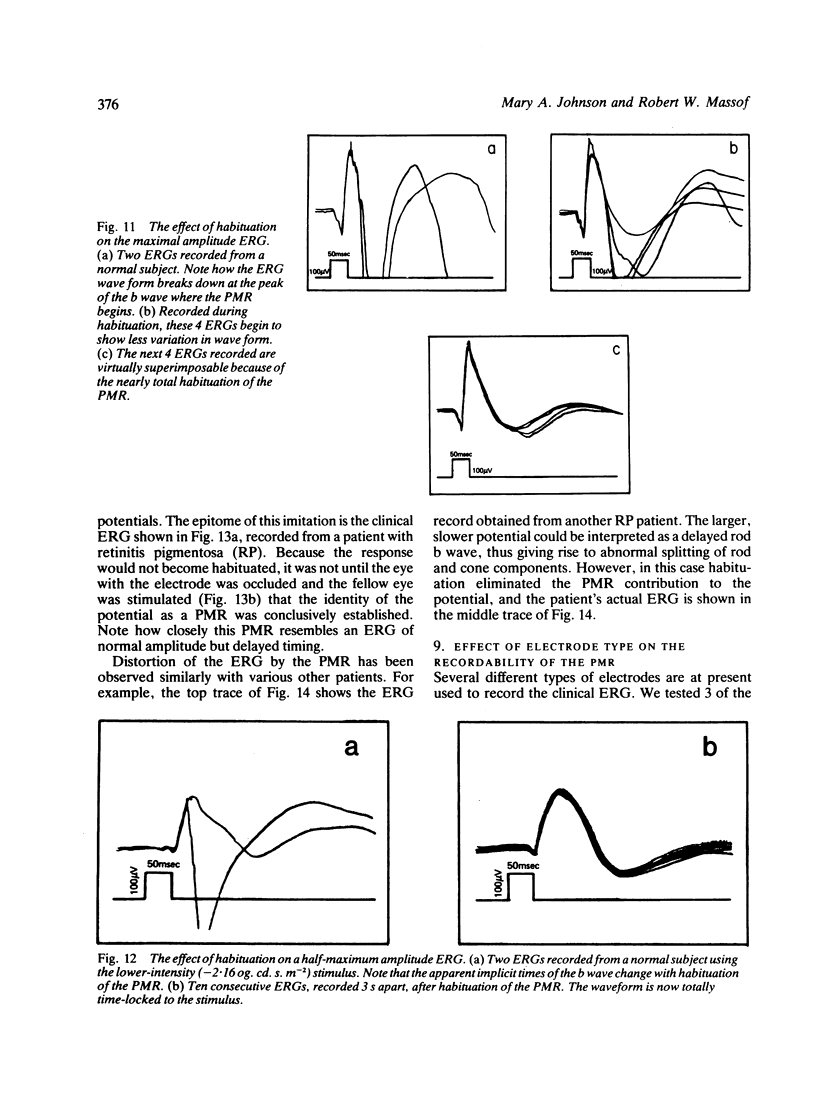
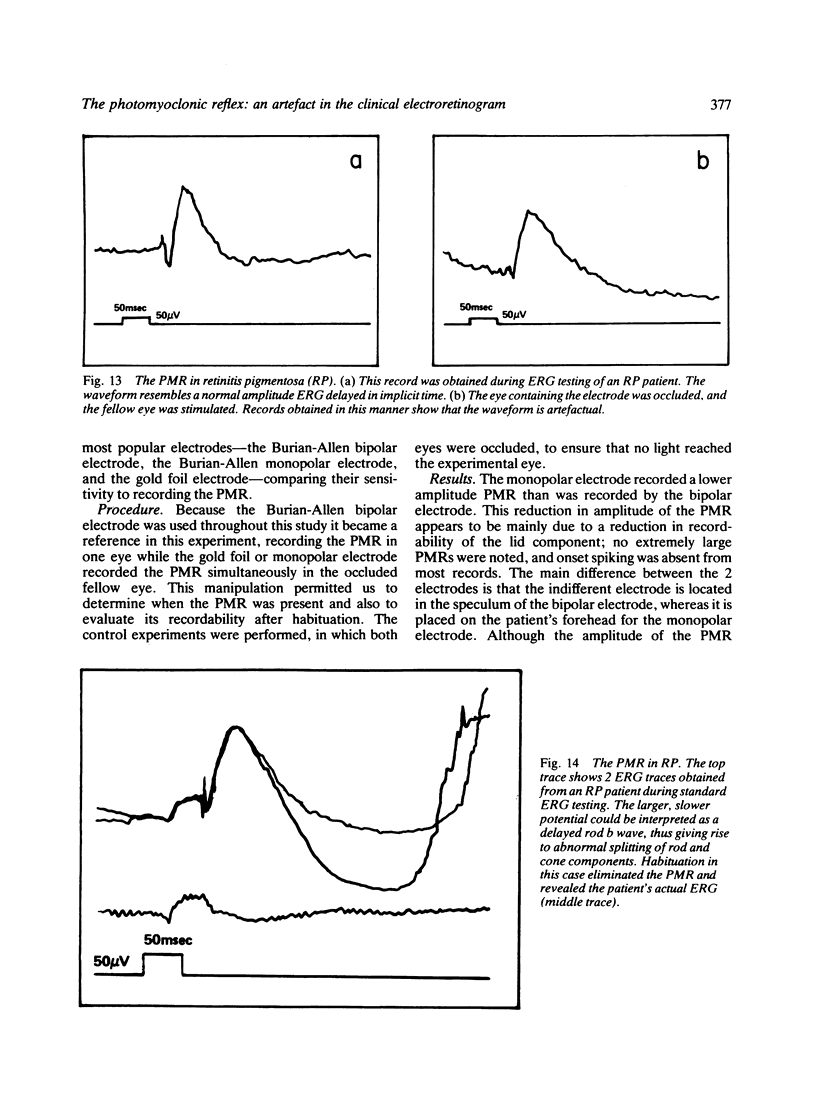
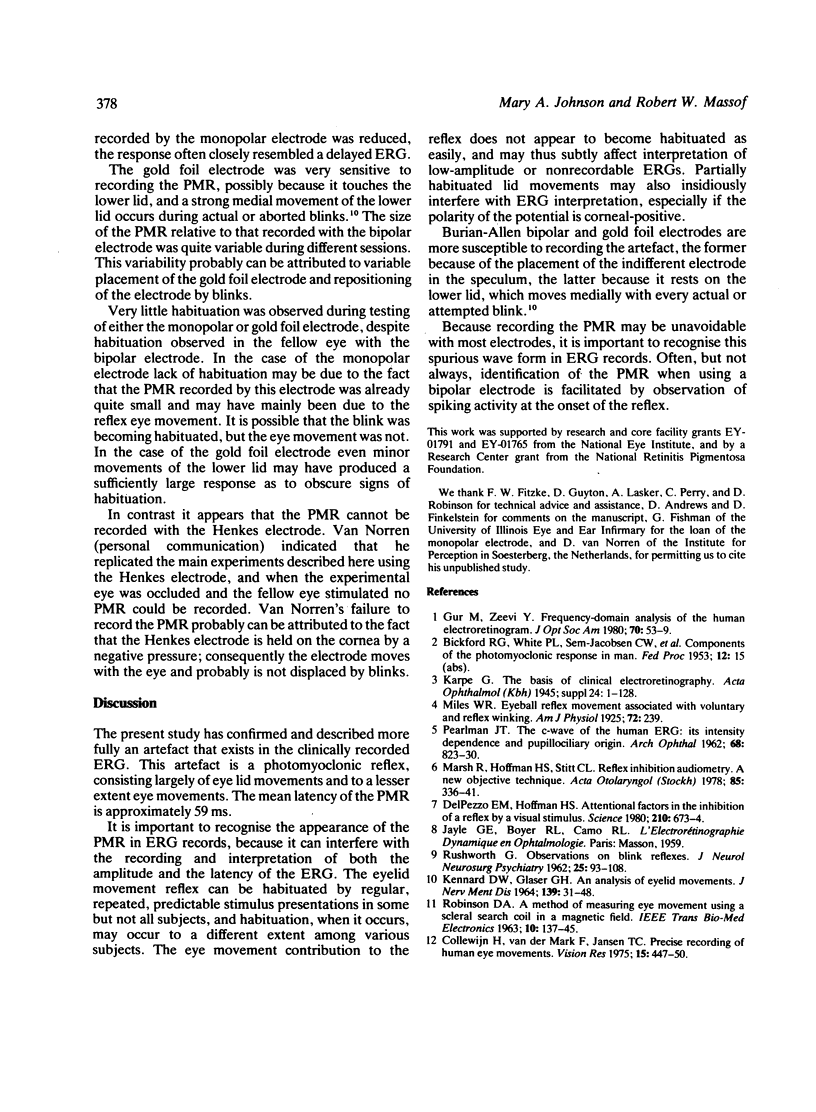
Images in this article
Selected References
These references are in PubMed. This may not be the complete list of references from this article.
- Collewijn H., van der Mark F., Jansen T. C. Precise recording of human eye movements. Vision Res. 1975 Mar;15(3):447–450. doi: 10.1016/0042-6989(75)90098-x. [DOI] [PubMed] [Google Scholar]
- DelPezzo E. M., Hoffman H. S. Attentional factors in the inhibition of a reflex by a visual stimulus. Science. 1980 Nov 7;210(4470):673–674. doi: 10.1126/science.7433993. [DOI] [PubMed] [Google Scholar]
- Gur M., Zeevi Y. Frequency-domain analysis of the human electroretinogram. J Opt Soc Am. 1980 Jan;70(1):53–59. doi: 10.1364/josa.70.000053. [DOI] [PubMed] [Google Scholar]
- KENNARD D. W., GLASER G. H. AN ANALYSIS OF EYELID MOVEMENTS. J Nerv Ment Dis. 1964 Jul;139:31–48. doi: 10.1097/00005053-196407000-00004. [DOI] [PubMed] [Google Scholar]
- Marsh R. R., Hoffman H. S., Stitt C. L. Reflex inhibition audiometry. A new objective technique. Acta Otolaryngol. 1978 May-Jun;85(5-6):336–341. doi: 10.3109/00016487809121461. [DOI] [PubMed] [Google Scholar]
- PEARLMAN J. T. The C-wave of the human ERG. Its intensity dependence and pupillociliary orgin. Arch Ophthalmol. 1962 Dec;68:823–830. doi: 10.1001/archopht.1962.00960030827018. [DOI] [PubMed] [Google Scholar]
- ROBINSON D. A. A METHOD OF MEASURING EYE MOVEMENT USING A SCLERAL SEARCH COIL IN A MAGNETIC FIELD. IEEE Trans Biomed Eng. 1963 Oct;10:137–145. doi: 10.1109/tbmel.1963.4322822. [DOI] [PubMed] [Google Scholar]
- RUSHWORTH G. Observations on blink reflexes. J Neurol Neurosurg Psychiatry. 1962 May;25:93–108. doi: 10.1136/jnnp.25.2.93. [DOI] [PMC free article] [PubMed] [Google Scholar]



